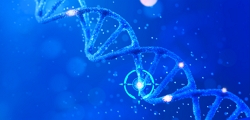-
REAGENT SERVICES
Hot!
-
Most Popular Services
-
Molecular Biology
-
Recombinant Antibody/Protein
-
Reagent Antibody
-
CRISPR Gene Editing
-
DNA Mutant Library
-
IVT RNA and LNP Formulations
-
Oligo Synthesis
-
Peptides
-
Cell Engineering
-
- Gene Synthesis FLASH Gene
- GenBrick™ Up to 200kb
- Gene Fragments Up to 3kb now
- Plasmid DNA Preparation Upgraded
- Cloning and Subcloning
- ORF cDNA Clones
- mRNA Plasmid Solutions New!
- Cell free mRNA Template New!
- AAV Plasmid Solutions New!
- Mutagenesis
- GenCircle™ Double-Stranded DNA New!
- GenSmart™ Online Tools
-
-
PRODUCTS
-
Most Popular Reagents
-
 Instruments
Instruments
-
Antibodies
-
ELISA Kits
-
Protein Electrophoresis and Blotting
-
Protein and Antibody Purification
-
Recombinant Proteins
-
Molecular Biology
-
Stable Cell Lines
-
Cell Isolation and Activation
-
 IVD Raw Materials
IVD Raw Materials
-
 Therapy Applications
Therapy Applications
-
Resources
-
- All Instruments
- Automated Protein and Antibody Purification SystemNew!
- Automated Plasmid MaxiprepHot!
- Automated Plasmid/Protein/Antibody Mini-scale Purification
- eBlot™ Protein Transfer System
- eStain™ Protein Staining System
- eZwest™ Lite Automated Western Blotting Device
- CytoSinct™ 1000 Cell Isolation Instrument
-
- Pharmacokinetics and Immunogenicity ELISA Kits
- Viral Titration QC ELISA Kits
- -- Lentivirus Titer p24 ELISA KitHot!
- -- MuLV Titer p30 ELISA KitNew!
- -- AAV2 and AAVX Titer Capsid ELISA Kits
- Residual Detection ELISA Kits
- -- T7 RNA Polymerase ELISA KitNew!
- -- BSA ELISA Kit, 2G
- -- Cas9 ELISA KitHot!
- -- Protein A ELISA KitHot!
- -- His tagged protein detection & purification
- dsRNA ELISA Kit
- Endonuclease ELISA Kit
- COVID-19 Detection cPass™ Technology Kits
-
- Automated Maxi-Plasmid PurificationHot!
- Automated Mini-Plasmid PurificationNew!
- PCR Reagents
- S.marcescens Nuclease Benz-Neburase™
- DNA Assembly GenBuilder™
- Cas9 / Cas12a / Cas13a Nucleases
- Base and Prime Editing Nucleases
- GMP Cas9 Nucleases
- CRISPR sgRNA Synthesis
- HDR Knock-in Template
- CRISPR Gene Editing Kits and Antibodies
-
![AmMag™ Quatro Automated Plasmid Purification]() AmMag™ Quatro automated plasmid purification
AmMag™ Quatro automated plasmid purification
-
![Anti-Camelid VHH]() MonoRab™ Anti-VHH Antibodies
MonoRab™ Anti-VHH Antibodies
-
![ELISA Kits]() ELISA Kits
ELISA Kits
-
![Precast Gels]() SurePAGE™ Precast Gels
SurePAGE™ Precast Gels
-
![Quatro ProAb Automated Protein and Antibody Purification System]() AmMag™ Quatro ProAb Automated Protein and Antibody Purification System
AmMag™ Quatro ProAb Automated Protein and Antibody Purification System
-
![Target Proteins]() Target Proteins
Target Proteins
-
![AmMag™ Quatro Automated Plasmid Purification]() AmMag™ Quatro automated plasmid purification
AmMag™ Quatro automated plasmid purification
-
![Stable Cell Lines]() Stable Cell Lines
Stable Cell Lines
-
![Cell Isolation and Activation]() Cell Isolation and Activation
Cell Isolation and Activation
-
 IVD Raw Materials
IVD Raw Materials
-
![Quick
Order]() Quick Order
Quick Order
-
![Quick
Order]() Quick Order
Quick Order
- APPLICATIONS
- RESOURCES
- ABOUT US
- SIGN IN My Account SIGN OUT
- REGISTER

![Positional Scanning Library Positional Scanning Library]()
Antimicrobial peptides and antimicrobial resistance
Tools for antimicrobial peptide drug development
Resources » Technical Resource Centers » Peptide Technical Resources » Antimicrobial Peptides (AMPs)
Overview
Antimicrobial resistance is fast rising to the top of the list of concerns of scientists, and policy makers alike. Antimicrobial resistance is not just limited to drugs aimed at microbes. Every class of antibiotics is affected by antimicrobial resistance including antivirals, antiparasitic and antifungal drugs. Antibacterial drugs were originally isolated from natural sources, but as the threat of antibacterial resistance looms, the development of intelligently designed antimicrobial drugs, including small molecules and custom antimicrobial peptides has been fostered.
Antimicrobial peptides(AMPs) are short peptide ranging from 10 to 50 amino acids and has a broad spectrum of antibiotic activities against bacteria, yeasts, fungi, and viruses, as well as cytotoxic activity on cancer cells, anti-inflammatory, and immunomodulatory activities.
In addition to being a tool for antimicrobial drug development, AMPs are considered as one of the most promising feed additives in swine, poultry and even fish production. As feed additives AMPs show remarkable effects, including: broad spectrum effects, low levels of reduced resistance, improve growth performance and enhance immune function, etc.
The distinct activity of antimicrobial peptides governs their sequence, namely, the incorporation of these peptides into microbial cell membranes. As a result, these sequences usually consist of >50% hydrophobic residues. Due to the negative charge of many microbial membrane components (e.g. phospholipids, lipopolysaccharides and teichonic acids), antimicrobial peptides are often cationic in nature. In addition, they may contain modifications such as cyclization or disulfide bonds.
Custom Peptide Synthesis
Antimicrobial Peptide SequencesCustom antimicrobial peptide sequences synthesized to order, including hydrophobic synthesis expertise
Learn MorePeptide LibraryPeptide library screen from 24 to 100s of peptide sequences for antimicrobial activity
Learn MoreLarge-Scale Peptide ServiceLarge-scale peptide service –from 100 mg to 2 kilogram
Learn MoreComprehensive ModificationsComprehensive Modifications including disulfide bonds and cyclization
Learn MoreSolubility TestingSolubility Testing – customized dissolution profiles for hard to dissolve peptides
Learn MoreInstant Online Quotations
-




































